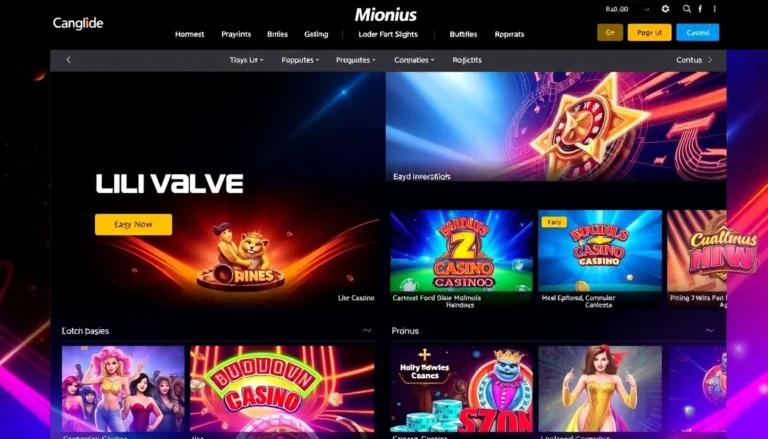
Introduction to Free Coloring Pages: Benefits and Opportunities
Coloring pages have long been a cornerstone of childhood creativity and educational development. With the advent of digital resources, free printable coloring pages have become more accessible than ever, providing parents, educators, and children with endless opportunities for fun and learning. These pages are not only delightful for imaginative play but also serve as powerful tools for skill development, cognitive engagement, and emotional expression. Whether it’s a simple elephant, a festive Thanksgiving scene, or pride-themed designs, free coloring pages cater to a wide array of interests and developmental needs. To explore these resources with ease, visit Free Coloring Pages—a premier destination for high-quality, diverse printable coloring sheets tailored for all ages.
Why Free Coloring Pages Enhance Learning and Fun
The value of free coloring pages extends beyond mere entertainment. They promote critical skills such as fine motor control, color recognition, and spatial awareness. By grasping crayons, markers, or colored pencils, children refine their hand-eye coordination and dexterity—key components for writing and other precise tasks. Moreover, coloring helps in developing attention to detail and patience, as kids focus on coloring within lines and choosing appropriate color schemes. Engaging with varied themes—be it animals, holidays, or abstract patterns—stimulates curiosity, expands vocabulary, and encourages thematic understanding. Additionally, the act of coloring fosters emotional wellbeing by offering a soothing, meditative activity that reduces stress and promotes self-expression. These benefits are amplified when the coloring pages are free and easily accessible, making quality educational tools available to all families and educators regardless of budget constraints.
Popular Themes and Designs for All Ages
The diversity of themes available in free coloring pages ensures that there’s something for everyone. For young children, playful designs like animals (elephants, grasshoppers, birds), cartoons (Minnie Mouse, Pennywise), and holiday motifs (Thanksgiving turkeys, Halloween pumpkins) captivate their attention and support early learning. For older kids and adults, more intricate patterns such as pride-themed graphics, gothic designs, and detailed mazes provide stimulating challenges that foster mindfulness and patience.
Some popular themes include:
- Educational Characters: Animals, alphabet letters, numbers, and science themes like insects and plants enhance knowledge while being fun to color.
- Holidays and Celebrations: Thanksgiving, Christmas, Halloween, and Pride Month coloring pages help children connect with cultural and societal traditions.
- Mazes and Puzzles: Engaging puzzle pages that develop problem-solving skills and visual tracking.
- Special Interest and Artistic Styles: Goth, sci-fi, or abstract designs appeal to specific tastes and encourage personal artistic expression.
This array ensures that children remain engaged, making coloring an ongoing source of fun and learning tailored to their evolving interests.
Getting Started with Printable Coloring Pages
To maximize the benefits of free coloring pages, setting up a dedicated coloring area is essential. Provide a variety of coloring tools—crayons, markers, colored pencils—and establish a comfortable, well-lit space. Downloading and printing coloring pages from reputable sources like Free Coloring Pages simplifies access, offering high-resolution sheets suitable for different printing devices. Many websites offer categorized collections, enabling easy navigation based on themes, difficulty level, or age appropriateness. Furthermore, organizing printable pages in folders or binders helps create a sustainable library that children can revisit repeatedly.
For educators, integrating these pages into lesson plans can reinforce curriculum content, such as coloring science diagrams, historical figures, or cultural symbols. Parents should encourage children to choose themes that resonate personally, fostering motivation and emotional connection. Remember, the goal is to create an enjoyable environment where children can freely explore their creativity while honing essential skills.
Creative Ways to Use Free Coloring Pages in Education
Incorporating Coloring Pages into Homeschool Curriculums
Homeschooling offers flexibility to embed coloring pages seamlessly into learning modules. For instance, during a science lesson, children can color detailed diagrams of insects like grasshoppers and beetles, reinforcing their understanding of anatomy and ecology. Thematic coloring related to holidays—like Thanksgiving or Pride celebrations—can foster cultural awareness and empathy. Incorporate coloring into language arts by creating story prompts based on characters or scenes from the pages, stimulating narrative skills and vocabulary expansion. Additionally, coloring pages can serve as visual aids during math lessons, such as coloring geometric shapes or counting objects within scenes.
The key is to align coloring activities with educational objectives. For example, a maze activity like a Thanksgiving cornfield maze can develop problem-solving skills, while pride-themed pages promote discussions about diversity and inclusion. Integrating these activities regularly enhances engagement and offers varied modalities for understanding complex topics.
Using Coloring for Fine Motor Skills Development
One of the foundational benefits of coloring lies in its ability to develop fine motor control. Carefully coloring within lines requires precision, grip strength, and hand stability. For preschoolers, simple coloring pages featuring large shapes or basic animals help build initial skills; for older children, more detailed designs—such as intricate Pennywise or goth-themed pages—provide greater challenges.
Experts recommend starting with broad strokes and gradually encouraging finer details as children improve. Incorporate activities like coloring with different tools (e.g., crayon vs. marker) and practicing coloring techniques such as shading or blending shades for advanced learners. Providing consistent, age-appropriate coloring activities not only improves motor skills but also boosts concentration, patience, and confidence.
Educational Themes: Animals, Holidays, and More
Thematic coloring pages serve as effective teaching aids. For example, during a unit on animals, children can color elephants, grasshoppers, and other insects to reinforce classification and habitats. Holidays like Thanksgiving are perfect opportunities to explore cultural traditions—coloring turkeys, cornucopias, and autumn scenes enhances understanding and personal connection.
Moreover, themes like pride or gothic designs introduce discussions about identity, history, art, and societal values. Such themes not only diversify children’s experiences but also promote acceptance and inclusivity. Incorporating stories or facts alongside coloring pages deepens learning, turning coloring sessions into comprehensive educational moments.
Designing Engaging Coloring Pages: Tips for Content Creators
Balancing Simplicity and Detail for Different Age Groups
Creating compelling coloring pages requires understanding the developmental abilities of the target audience. Younger children benefit from simple, bold outlines with large spaces and limited intricate details. These designs ease frustration and encourage independence. Conversely, older children and adults appreciate more complex scenes—full of detailed patterns and subtle shading—offering hours of engaging coloring.
Best practices include:
- For early childhood: Focus on clear, uncluttered images like elephants, simple holiday symbols, or basic maze paths.
- For older age groups: Incorporate detailed designs, themed patterns, and combinatory art that challenge fine motor skills and artistic judgment.
Thorough user testing and feedback help fine-tune the balance, ensuring each design meets the needs of its intended audience.
Incorporating Educational Elements and Fun Graphics
Educational coloring pages should seamlessly blend fun graphics with instructive content. For example, a Thanksgiving-themed page could feature a turkey surrounded by words like “gratitude,” “family,” and “harvest,” reinforcing vocabulary. Animal pages might include labels for body parts, promoting science literacy. Maze puzzles can be designed around thematic elements, such as guiding a grasshopper through a garden or a Pennywise character navigating a haunted house.
To enhance engagement, designers can include interactive prompts or mini-activities within the pages, such as “Color the rainbow” or “Find and circle the hidden objects.” Incorporating diverse graphics that reflect various cultures, holidays, and interests ensures broad appeal and educational depth.
Optimizing Designs for Download and Print Performance
Efficient, high-quality downloads are crucial to delivering a satisfying coloring experience. Design files should be optimized for various devices and printers, balancing resolution with file size to ensure quick downloads without sacrificing clarity. Use vector graphics or high-resolution PNGs to preserve details during printing.
Designers should also consider margins and bleed areas to facilitate clean trimming. Clear, simple instructions or labels can improve usability, especially for educational purposes. Testing print quality across different printers and paper types helps identify and fix issues, ensuring that every user receives a professional-looking product that encourages repeated use.
Promoting Your Free Coloring Pages Effectively
Leveraging SEO to Reach More Families and Educators
Search Engine Optimization (SEO) is key for increasing visibility of your coloring pages. Use targeted keywords such as “free coloring pages” with strategic placement in titles, meta descriptions, and image alt texts. Creating keyword-rich content like blog posts, tutorials, and activity ideas around popular themes further enhances search rankings. Rich snippets, schema markup for creative works, and optimized site structure improve search engine crawling and ranking.
Building backlinks through guest blogging, collaborations with parenting and education platforms, and sharing on niche forums boosts authority. Regularly updating your collection and adding new content keeps your website fresh and attractive to search engines, driving organic traffic aimed at families and educators seeking free resources.
Using Social Media and Email Campaigns for Distribution
Social media platforms—Facebook, Instagram, Pinterest—offer powerful channels for sharing your coloring pages, especially using engaging visuals and themed posts. Creating downloadable previews encourages shares and saves, spreading awareness. Hashtags related to parenting, homeschooling, and education foster community interaction and reach targeted audiences.
Newsletter campaigns can deliver new coloring page collections directly to subscribers’ inboxes. Offering exclusive content or seasonal resources incentivizes sign-ups, fostering loyalty. Using contests and user-generated content encourages engagement and showcases real-world use of your coloring pages.
Partnering with Educational and Parenting Platforms
Forming strategic partnerships with educational blogs, homeschooling networks, and parenting sites extends your reach. Offering collaborative projects, guest articles, or co-hosted events increases visibility. Providing free resources to classrooms or community centers can generate testimonials and word-of-mouth referrals.
Additionally, participating in online fairs, webinars, and live workshops demonstrates expertise, drawing more traffic to your website. Collaborations not only increase downloads but also position your brand as a trusted authority in quality, educational free printable resources.
Measuring Impact and Improving Your Coloring Page Collection
Gathering Feedback from Users and Educators
Soliciting feedback through surveys, comment sections, and social media helps identify user preferences and areas for enhancement. Questions about design clarity, educational value, and age appropriateness inform iterative improvements. Offering incentives for reviews encourages participation.
Monitoring user contributions, such as photos of finished coloring pages, enables you to assess how your resources are being utilized and celebrated by the community. Demonstrating responsiveness and incorporating suggestions foster a loyal, engaged audience.
Analyzing Download and Engagement Metrics
Utilize website analytics tools to track download rates, popular themes, and bounce rates. Metrics such as time spent on page, click-through rates, and social shares provide insights into what resonates most. Analyzing these patterns directs future content creation efforts, ensuring that your collection remains relevant and compelling.
A/B testing different designs, keywords, and promotional strategies allows data-driven decision-making. Regularly reviewing performance metrics helps you adapt and optimize your offerings effectively.
Updating Content to Keep Users Coming Back
Continuous updates, including seasonal collections, thematic series, and user-requested designs, keep your content fresh. Announcing new releases through newsletters and social media maintains interest and encourages repeat visits. Incorporating trending topics or cultural events ensures relevance.
Implementing a content calendar and maintaining a backlog of ideas ensures a steady stream of new resources. Highlighting popular or frequently downloaded pages fosters a sense of community and anticipation among your users.






